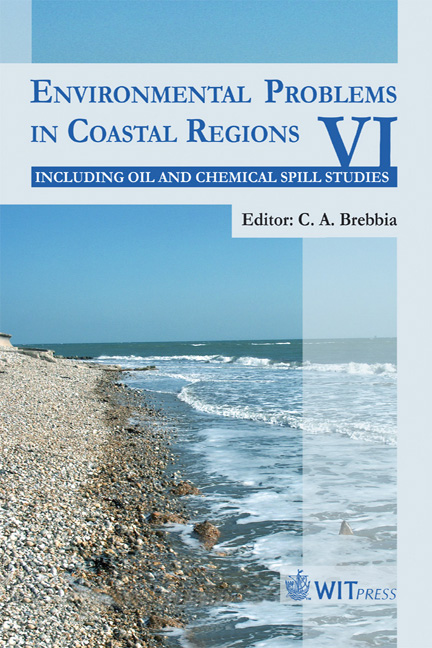Monitoring Methods Of Dunefield Susceptible To Human Activities In The Nísia Floresta Area, Eastern Coast Of The State Of Rio Grande Do Norte, Brazil
Price
Free (open access)
Transaction
Volume
88
Pages
10
Published
2006
Size
2,151 kb
Paper DOI
10.2495/CENV060371
Copyright
WIT Press
Author(s)
V. D. Araujo, Y. A. Reyes-Pérez, R. C. Freire, D. S. Gauw, D. A. S. Santos, P. Fracasso, A. M. Souza, A. P. M. R. Pelosi, V. C. Córdoba & F. P. Lima-Filho
Abstract
The coastal area of northeastern Brazil shows a wide range of dunefields, which were formed during the Holocene and Pleistocene periods. In the eastern coast of the Rio Grande do Norte State (RN), these aeolian provinces are characterized by older (stabilized by vegetation) and young (without vegetation) dunefields. They cover a large coastal zone, which forms important aquifers that supply water to several coastal cities, including Natal, the capital of the state. This coastal area is also characterized by the tourism industry, which is considered one of the most important financial resources and means of employment generation. Despite this importance, no study has been carried out concerning the impact of tourism activities in this area. Because of this, the aim of this work is to present a monitoring method of the coastal dunefields in the town of Nísia Floresta, Brazil, including the periodical identification of internal geometries of dunes with GPR profiling, and external geometries of dunes using a Geodesic GPS. The study area is characterized by SE-NW-trending dunefields. They are composed of blowouts, blowout dunes, and interdune areas, which have been modified by human occupation and off-road vehicle driving. The data permits the analysis of depositional and erosional controls and relates it to the reference of the Dunas Park, a conservation area near the town of Nísia Floresta. Keywords: coastal dunes, monitoring method, GPR, GPS.
Keywords
coastal dunes, monitoring method, GPR, GPS.





